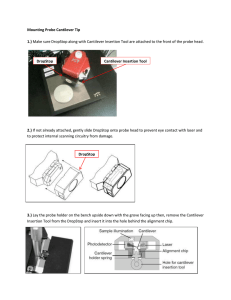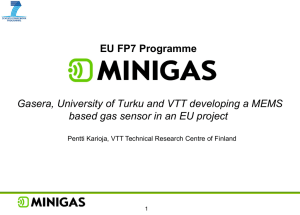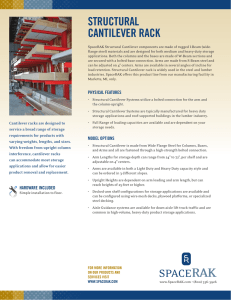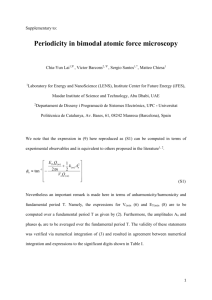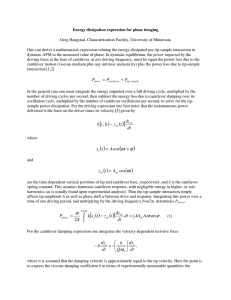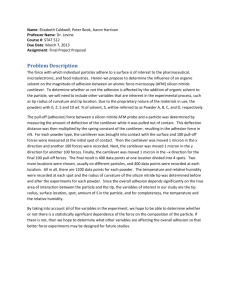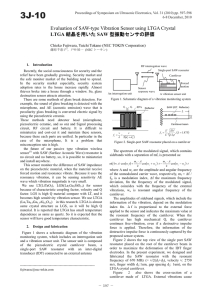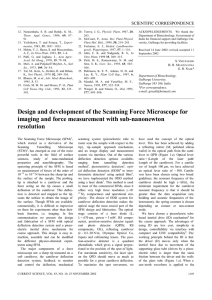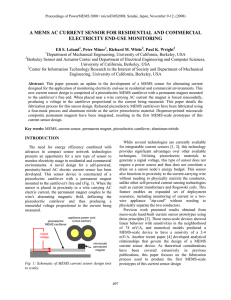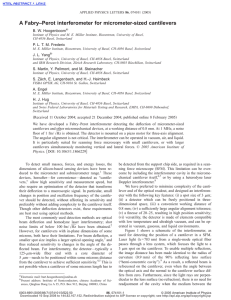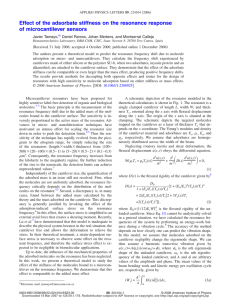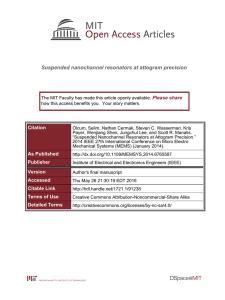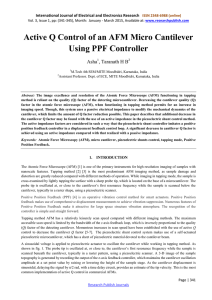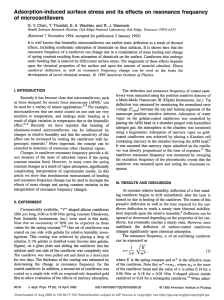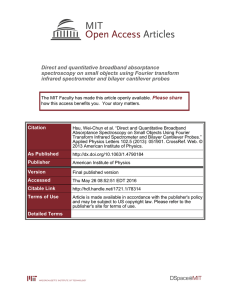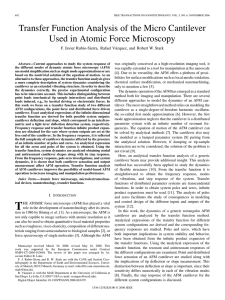Document 11919959
advertisement
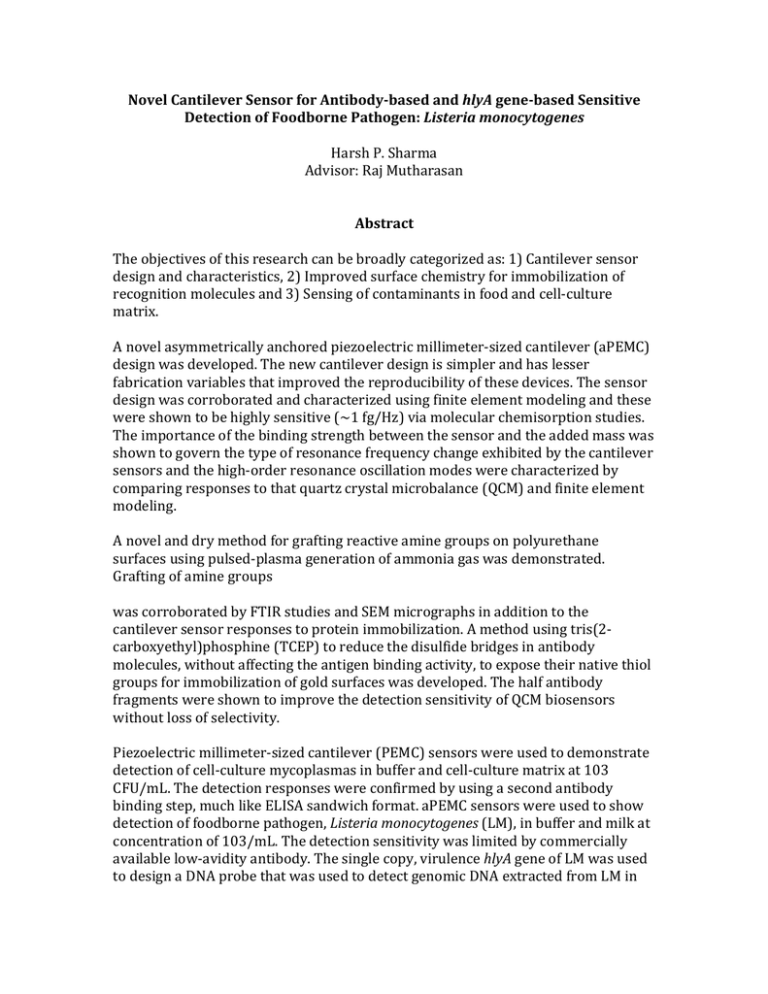
Novel Cantilever Sensor for Antibody-­‐based and hlyA gene-­‐based Sensitive Detection of Foodborne Pathogen: Listeria monocytogenes Harsh P. Sharma Advisor: Raj Mutharasan Abstract The objectives of this research can be broadly categorized as: 1) Cantilever sensor design and characteristics, 2) Improved surface chemistry for immobilization of recognition molecules and 3) Sensing of contaminants in food and cell-­‐culture matrix. A novel asymmetrically anchored piezoelectric millimeter-­‐sized cantilever (aPEMC) design was developed. The new cantilever design is simpler and has lesser fabrication variables that improved the reproducibility of these devices. The sensor design was corroborated and characterized using finite element modeling and these were shown to be highly sensitive (~1 fg/Hz) via molecular chemisorption studies. The importance of the binding strength between the sensor and the added mass was shown to govern the type of resonance frequency change exhibited by the cantilever sensors and the high-­‐order resonance oscillation modes were characterized by comparing responses to that quartz crystal microbalance (QCM) and finite element modeling. A novel and dry method for grafting reactive amine groups on polyurethane surfaces using pulsed-­‐plasma generation of ammonia gas was demonstrated. Grafting of amine groups was corroborated by FTIR studies and SEM micrographs in addition to the cantilever sensor responses to protein immobilization. A method using tris(2-­‐ carboxyethyl)phosphine (TCEP) to reduce the disulfide bridges in antibody molecules, without affecting the antigen binding activity, to expose their native thiol groups for immobilization of gold surfaces was developed. The half antibody fragments were shown to improve the detection sensitivity of QCM biosensors without loss of selectivity. Piezoelectric millimeter-­‐sized cantilever (PEMC) sensors were used to demonstrate detection of cell-­‐culture mycoplasmas in buffer and cell-­‐culture matrix at 103 CFU/mL. The detection responses were confirmed by using a second antibody binding step, much like ELISA sandwich format. aPEMC sensors were used to show detection of foodborne pathogen, Listeria monocytogenes (LM), in buffer and milk at concentration of 103/mL. The detection sensitivity was limited by commercially available low-­‐avidity antibody. The single copy, virulence hlyA gene of LM was used to design a DNA probe that was used to detect genomic DNA extracted from LM in the presence of ~104 times higher non-­‐target genomic DNA. Detection of genomic DNA equivalent to 7×102 LM was achieved within ~90 min.




